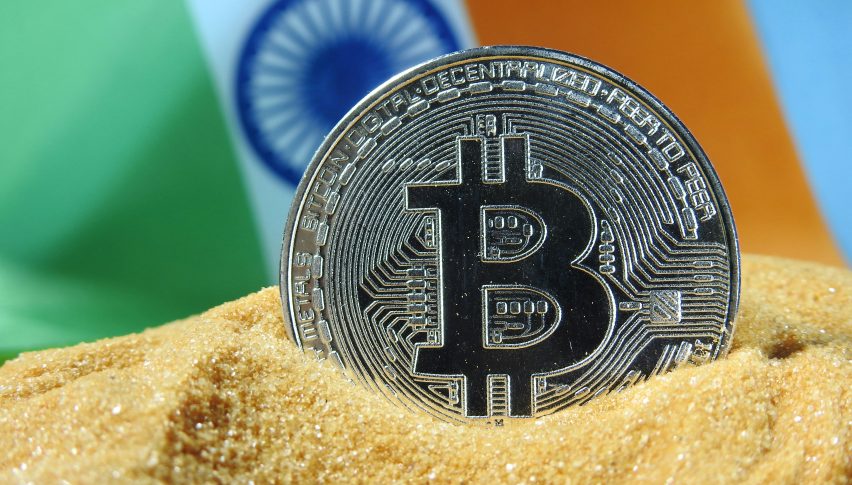Crypto World Braces For Bitcoin Halving
It is Bitcoin halving again and crypto markets as well as the wider financial markets are waiting with bated breath for the much-anticipated Bitcoin halving event. The pre-programmed Bitcoin halving event is 65 blocks away and is expected to happen within 10 hours.
Meanwhile, markets are flooded with commentaries about the impact the event could create for Bitcoin prices as well as the larger crypto world. Amidst the bullish projections and the cautious warnings, overall crypto market capitalization is at $2.35 trillion, and Bitcoin’s price is 12 percent below the all-time high.
As the crypto world braces for the looming Bitcoin halving event, here is a trip down the memory lane to contrast the widely divergent economic and market scenario that prevailed at the time of previous Bitcoin halving event and that which exists now. What transpired in between also warrants an analysis.
| Broker | Review | Regulators | Min Deposit | Website | |
|---|---|---|---|---|---|
| 🥇 |  | Read Review | FCA, CySEC, ASIC, MAS, FSA, EFSA, DFSA, CFTC | USD 100 | Visit Broker |
| 🥈 |  | Read Review | FSCA, FSC, ASIC, CySEC, DFSA | USD 5 | Visit Broker |
| 🥉 |  | Read Review | CySEC, MISA, FSCA | USD 25 | Visit Broker |
| 4 |  | Read Review | ASIC, BaFin, CMA, CySEC, DFSA, FCA, SCB | USD 200 | Visit Broker |
| 5 |  | Read Review | ASIC, FCA, CySEC, SCB | USD 100 | Visit Broker |
| 6 |  | Read Review | FCA, FSCA, FSC, CMA | USD 200 | Visit Broker |
| 7 |  | Read Review | BVI FSC | USD 1 | Visit Broker |
| 8 |  | Read Review | CBCS, CySEC, FCA, FSA, FSC, FSCA, CMA | USD 10 | Visit Broker |
| 9 |  | Read Review | ASIC, CySEC, FSCA, CMA | USD 100 | Visit Broker |
| 10 |  | Read Review | IFSC, FSCA, ASIC, CySEC | USD 1 | Visit Broker |
The previous Bitcoin halving event took place on Monday, May 11, 2020. The third halving reduced the Bitcoin mining reward to 6.25 Bitcoin per block. The halving of mining rewards is pre-programmed to take place with each 210 thousand blocks. The fourth Bitcoin halving event would reduce the Bitcoin mining reward to 3.125 Bitcoin per block.
On May 10, 2020, Bitcoin was last traded near $8,700 and commanded a market capitalization of around $161 billion. The circulating supply was around 18.4 million. Ahead of the current halving, Bitcoin is now trading near $64,960 and commands a market capitalization of $1.28 trillion. The circulating supply is currently 19.7 million or 93.75 percent of the maximum supply of 21 million.
Overall crypto market capitalization was around $234 billion at the time of the previous halving whereas it is near $2.35 trillion currently. Bitcoin’s crypto market share decreased from around 68 percent in May 2020 to 54 percent currently. The share of altcoins increased amidst a jump in the total number of ranked cryptocurrencies to more than 9700, from around 2500 ahead of the previous halving.
The onset of the Covid-19 pandemic in January 2020 altered the world economic scene drastically. The U.S. economy recorded a contraction of 5.3 percent in the first quarter of 2020 and 28 percent in the second quarter of 2020. Inflation in the U.S. was low at 1.5 percent in March 2020 and 0.3 percent in April 2020.
In response, the Federal Reserve, in March 2020 slashed rates to 1.25 percent and to 0.25 percent a month later. The Fed also started increasing its holdings of Treasury securities and agency mortgage-backed securities in order to support the flow of credit to households and businesses amidst the pandemic. The twin actions increased general liquidity while swelling the Fed’s Balance Sheet.
Between May 2020 and mid-November 2021, the Fed’s Balance Sheet increased from $6.9 trillion to $8.7 trillion. During the same period, crypto market capitalization increased from $234 billion to almost $3 trillion.
By October 2021, consumer price inflation jumped to 6.2 percent. In November 2021, the Fed started tapering its monthly asset purchases. In March 2022 it embarked on a course correction by raising interest rates. Rates were increased till it touched a 22-year high of 5.5 percent in July 2023.
While at the time of the previous Bitcoin halving, the Fed was focused on ensuring the flow of credit to households and businesses, it is currently focused on reducing liquidity as well as combatting inflation. Ten-year U.S. bond yields which were at 0.685 percent just before the previous Bitcoin halving have hardened to 4.6 percent now, evidencing the shift in focus.
The Dollar Index, which measures the Dollar’s strength against a basket of 6 currencies hovered near the 100 level before the previous halving. With higher interest rates and a hawkish monetary policy outlook boosting the Dollar, the Dollar Index is near the 106 level.
Despite interest rates remaining restrictive the U.S. economy recorded a growth of 4.9 percent and 3.4 percent in the last two quarters of 2023. U.S. consumer price inflation recorded 3.5 percent in March 2024, rising from 3.2 percent a month earlier. Sticky inflation, a resilient job market and a robust economy have reduced the headroom available to the Fed to commence an easing in the monetary policy.
The divergent macro-economic backdrop to a great extent explains the hesitance of crypto market in surpassing previous market capitalization records. Despite Bitcoin touching a fresh peak of $73,750 in March 2024, abetted by an unprecedented Bitcoin spot ETF frenzy, high interest rates continue to bother cryptocurrencies that are typically non-interest bearing.
Nevertheless, the halving euphoria has helped Bitcoin (BTC) clock overnight gains of 3.7 percent and year-to-date gains of 54 percent at its current price of $64,959.
Though Ethereum (ETH) has gained 2 percent overnight, at its current price of $3,101, Ether is still trading 37 percent below its all-time high.
5th ranked Solana (SOL) jumped more than 8 percent overnight. 10th ranked Cardano (ADA) added close to 6 percent in the past 24 hours. 4th ranked BNB (BNB), 8th ranked Toncoin (TON), and 9th ranked Dogecoin (DOGE) have all gained more than 3 percent in the past 24 hours. 7th ranked XRP (XRP) has recorded an overnight increase of more than 1 percent.
More than 90 percent of the top 100 cryptocurrencies are trading in the overnight green zone.
For More Cryptocurrency News, visit rttnews.com
Sidebar rates
82% of retail CFD accounts lose money.











